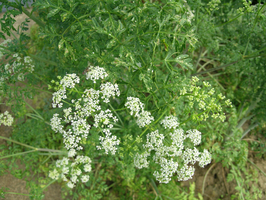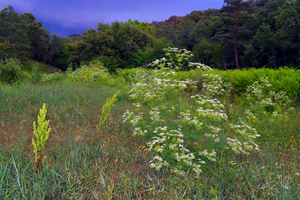Hemlock
Conium maculatum
Appearance
The hemlock grows to a height of 1 to 2 metres and smells unpleasantly of mouse urine. The stalk of the hemlock is hollow, finely grooved and has bluish frosting. The lower part of the stem is spotted red. The white flowers have 5 petals and are arranged in umbels consisting of 7 - 15 rays. The plant flowers from June to September and develops grey-green to brownish, notched fruits. The leaves are 2 - 3-pinnate, with a dark green upper side and a grey-green underside. The individual leaf sections are coarsely toothed.
Services
Last updated: 11.07.2024
automatically translated


